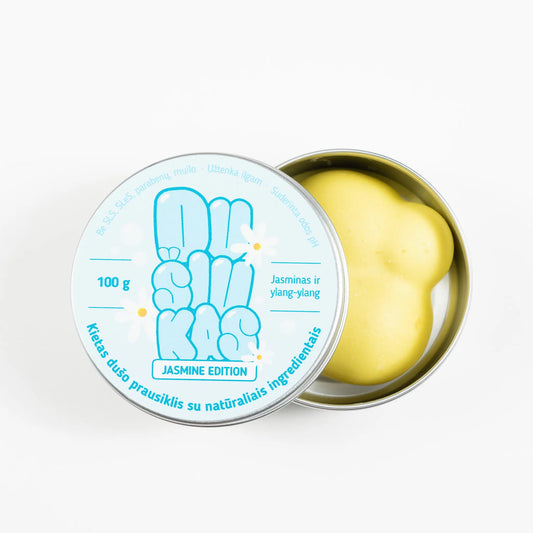1. Introduction: When hair color becomes a sign of health
Have you ever looked in the mirror and noticed that your hair looks... different? Maybe lighter? More gray? Or just lost its usual shine, even though you haven't used dye in months?
It may come as a surprise, but hair color changes aren't always cosmetic . Sometimes your hair is silently warning you of a health problem .
For women, it's not just about appearance. It's about self-confidence , identity , and even health signals . Sudden changes—lightening dark strands, premature graying, or fading—can be more than just signs of aging. They often mask internal disorders .
🔬 A study published in Nature in 2020 showed that stress depletes melanocyte stem cells , which can lead to premature graying – yes, the so-called Marie Antoinette syndrome story has a scientific basis.
Melanocytes , which produce pigment, are very sensitive: they are affected by hormones , the immune system , diet , and even medications . If one of these systems is out of balance, your hair shows it - often before other symptoms appear.
🧘 In Indian Ayurveda, premature graying is considered a sign of a pitta imbalance - related to liver, heat, or inflammation problems.

In this article you will learn:
-
How hair pigment is formed
-
What health problems are taking it away?
-
What symptoms to watch out for
-
When are color changes reversible – and when are they not?
💬 As dermatologist Carolyn Goh from UCLA says:
"Hair can reveal things that blood tests don't yet show."
So, if you've noticed an unexpected strand or color change, your hair can speak . And it could be saying something very important.
2. Hair Pigment Basics: How Color and Health Are Related
Before we delve into the medical reasons, it's worth understanding one simple thing: your hair color is a small miracle of chemistry .
Hair color is determined by a pigment called melanin , the same one that colors your skin and eyes. However, two types of melanin affect hair:
-
Eumelanin – responsible for black and brown shades
-
Pheomelanin – gives red, yellowish, copper tones
Each person's unique hair color is determined by the ratio of these two pigments - like mixing paints on a palette. More eumelanin = darker hair, more pheomelanin = warmer, more reddish tones.

These pigments are produced by melanocytes , located at the base of the hair follicle. As the hair grows, the melanocytes inject color into each strand .
However, this process is not automatic. It is influenced by:
-
Tyrosinase enzyme : essential for converting the amino acid tyrosine into melanin . If certain trace elements (e.g. copper) are lacking, the enzyme works more slowly – and the color fades .
-
Hormones : Estrogen, cortisol, thyroid hormones all affect the activity of melanocytes. Therefore, hair color often changes during pregnancy, menopause, or thyroid disorders .
-
Stem cells : These help melanocytes regenerate . When their numbers decrease due to stress, aging, or disease, pigment production slows down or stops altogether.
📊 Studies show that about 74% of premature graying cases under the age of 30 are not related to age, but to hormonal or nutritional disorders ( Journal of Trichology ).
🧬 In addition, in some regions – such as South Asia or Eastern Europe – there is a faster loss of melanocyte stem cells , so graying may begin earlier.
In short, your hair color is determined by a delicate interplay of enzymes, hormones, vitamins, and cellular balance . If any of these factors are disrupted, your hair can change—and it's often the first sign that something is wrong with your body .
3. Autoimmune disorders: when the body attacks pigment
3.1. Vitiligo and hair depigmentation
Imagine your immune system going haywire and attacking your own cells. That's exactly what happens with vitiligo , an autoimmune disease where the body destroys pigment-producing cells , including those in your hair.
In vitiligo, the immune system attacks melanocytes . They stop producing melanin, causing white patches or streaks to appear on areas of the skin and hair .
🤍 This phenomenon affects not only the scalp - eyebrows, eyelashes, or body hair can turn gray in areas where there is pigment loss.
What's most surprising? Vitiligo can:
-
Start with a barely visible spot and spread over time
-
Staying in one area for many years
-
Occur after stress , illness , or even severe sunburn
🧬 About 20-30% of people with vitiligo have a family history of other autoimmune diseases - most often thyroid, rheumatoid or lupus.
🇮🇳 In India, vitiligo is often called “safed daag” (white spot), reflecting the cultural stigma surrounding the condition, especially among women. However, global initiatives like World Vitiligo Day are changing attitudes and promoting acceptance.

Hair changes due to vitiligo most commonly:
-
Starts with white strands at the roots
-
Localized pale areas may form
-
Sometimes resembles the "salt and pepper" effect
Vitiligo often goes hand in hand with other autoimmune diseases, such as:
-
Hashimoto's (autoimmune thyroiditis)
-
Lupus
-
Type I diabetes
-
Rheumatoid arthritis
💬 As Dr. Pearl Grimes, a pigmentation specialist, says:
"Hair changes can be a very early sign of vitiligo – even before skin patches appear."
The good news is that in some cases, controlling inflammation and early treatment can stop or even partially restore pigment.
The most commonly used treatments are:
-
Corticosteroid ointments
-
UVB light therapy
-
Vitamin D analogues
-
Specific medications that affect the immune system (e.g. tacrolimus )
📈 A 2019 study showed that the likelihood of pigment returning increases by 42% if treatment is started within the first 6 months.
So, if you've noticed white or silver strands in clusters , especially in an unusual location, it could be your immune system sending a signal.
3.2. Alopecia areata and colorless growths
Alopecia areata is a condition that can strike very unexpectedly. One day your hair looks perfectly normal, and the next day you have a sudden, round patch of baldness . Your skin is smooth, free of scales or scars. Often, it comes on without warning.
This hair loss occurs because the immune system attacks the hair follicles , interrupting their growth cycle. But even more interesting is the hair regrowth .
⚪ For many women with alopecia areata, the regrown hair is white, silver, or blond , even if their hair was previously dark.
This happens because inflammation often damages the melanocytes more than the follicles themselves . In other words, the body restores hair growth faster than it restores its color.
📊 The Journal of Investigative Dermatology published a study in which more than 60% of patients with alopecia areata had unpigmented hair in their first regrowth.

What hair changes are noticeable:
-
New hair is very soft, white or translucent
-
Color may gradually return
-
In some cases, the pigment does not recover at all.
💬 Dr. Angela Christiano, who herself suffers from alopecia areata, says:
"The lack of hair color after regrowth is not just a cosmetic phenomenon - it indicates a deeper damage to the follicle pigment."
The most common causes of alopecia areata are:
-
Severe stress
-
Viral infections
-
Genetics (especially if there is a family history of autoimmune diseases)
It is important to understand: this white growth is not normal graying , but immune-mediated depigmentation . This is very different from permanent graying.
Although treatments – such as corticosteroid injections or immunotherapy – often promote hair regrowth, there is no guarantee that the color will return . However, early treatment increases the likelihood that the color will return at least partially.
So, if your hair suddenly falls out and grows back white , it's likely that an immune system disorder is to blame.
3.3. Other autoimmune diseases affecting pigment
Not all autoimmune diseases directly attack pigment-producing cells, but many still indirectly affect hair color , texture, and shine—usually through chronic inflammation or hormonal fluctuations .
🦋 Lupus
It is a systemic autoimmune disease that causes inflammation throughout the body , including the skin and scalp. Women with lupus often experience:
-
Color fading and dull tone
-
Hair brittleness
-
Occasionally – local loss of color
📊 A 2021 study in Lupus Science & Medicine found that 27% of women with lupus noticed noticeable changes in their hair color during a flare-up.

🧬 Psoriasis
Most commonly known for its scaly patches of skin, psoriasis on the scalp can also affect the follicles. This can lead to:
-
Uneven pigment distribution
-
The appearance of hair that looks ashy or “washed out”
🦴 Rheumatoid arthritis (RA)
Although the disease indirectly affects hair, medications used to treat RA—such as methotrexate or biologics —can have pigment-affecting side effects . In addition, chronic inflammation reduces blood flow to the follicles , which impairs melanin production .
💬 According to dermatologist Dr. Amy McMichael:
“Any autoimmune disease that causes systemic inflammation can affect hair pigment – even if the changes are very subtle at first.”
If you have any of these conditions and notice:
-
Color fading
-
Hair "fading"
-
Uneven color or brittle hair
...this could be a sign that your condition has become more active – or that your treatment plan needs to be reviewed.
4. Nutritional deficiencies that steal hair color
4.1. Vitamin B12 deficiency
When your hair starts to turn gray prematurely , especially if you're under 40, it's worth checking your vitamin B12 levels. It's one of the most commonly overlooked culprits of pigment loss .
Vitamin B12 is essential for:
-
For the production of red blood cells
-
For nervous system function
-
For cell renewal – including melanocytes in hair follicles
When the body lacks B12, it prioritizes vital functions (such as oxygen transport), and hair pigment is left aside .
📊 A study published in the International Journal of Trichology found that 55% of people under the age of 25 with premature graying had low blood levels of B12 .
B12 deficiency is especially common in:
-
In vegan or vegetarian diets (because B12 is found almost exclusively in animal products)
-
For people with digestive problems (e.g. gastritis, celiac disease, Crohn's disease)
-
For women over 40 years old whose bodies absorb vitamins less well

Other symptoms associated with deficiency:
-
Chronic fatigue
-
"Brain fog"
-
Pale or yellowish skin
-
Hair loss or dullness
💬 According to Dr. Alan R. Gaby, a nutritional medicine specialist:
"One of the first signs of B12 deficiency can be changes in hair color – especially graying before the age of 30."
The good news: B12 deficiency can be quickly corrected :
-
Take methylcobalamin or cyanocobalamin supplements
-
Choose fortified plant-based drinks and products
-
If you have absorption problems – B12 injections may be the most effective solution
If your dark brown hair has suddenly turned "ashy," it may not be stress that's to blame, but simply a lack of B12.
4.2. Iron deficiency
If your hair looks dull, lacking in volume or vitality , it may not be your shampoo that's to blame, but... an iron deficiency .
Iron is necessary for the body to:
-
Transport oxygen to cells (including hair follicles)
-
Ensure cell renewal and growth
-
Maintain melanocyte activity – i.e. pigment production
When iron is lacking, melanocytes receive less oxygen , which reduces their ability to produce melanin – and hair color becomes pale, dull, or unusually light.
📊 A study in the Journal of Clinical and Aesthetic Dermatology found that 72% of women with premature graying had reduced iron or ferritin levels .
Groups at higher risk:
-
Women with heavy menstruation
-
Pregnant women
-
People with impaired iron absorption (e.g. celiac disease, irritable bowel syndrome)
-
Those who limit their consumption of red meat
💬 According to Dr. Wilma Bergfeld of the Cleveland Clinic:
"Iron doesn't just affect energy. It's also essential for healthy, pigmented hair."
What to pay attention to:
-
Faded or "tired" hair color
-
Hair loss
-
Overall loss of glow
What to do?
-
Eat iron-rich foods : lentils, pumpkin seeds, red meat
-
Combine with vitamin C (improves iron absorption)
-
If ferritin level <30 ng/mL – consider supplementation
So, if your hair has gone from dark brown to a "cappuccino" shade – check the iron, not the dye .

4.3. Copper deficiency
Water, protein, vitamins... But have you ever thought about copper when it comes to your hair color?
Although this trace element is needed in very small amounts, it plays a key role in melanin production because:
-
Activates the enzyme tyrosinase , which is necessary for melanin synthesis
-
Helps hair follicles properly utilize the amino acid tyrosine
-
Promotes strong, pigmented hair structure
When copper is lacking, enzymes work slowly – and melanin is no longer produced efficiently , so hair can:
-
Become brighter or fade
-
Be more brittle , with split ends
-
Losing your natural shine
📊 A study by Biological Trace Element Research found that as many as 68% of people with premature graying had reduced copper levels in their blood .
Who is at risk for copper deficiency?
-
For people with malabsorption disorders (e.g. after bariatric surgery)
-
For those who consume too much zinc (zinc reduces copper absorption)
-
For people who do not consume seafood, nuts or seeds
💬 As Dr. Elizabeth Boham, a functional medicine doctor, states:
“When copper deficiency affects pigment, it is often one of the first warning signs you notice.”
How to get more copper?
-
Eat cashews, sunflower seeds, dark chocolate, lentils
-
Avoid excessive zinc supplements
-
In case of a serious deficiency, your doctor may recommend copper supplements.
If your espresso-colored hair has suddenly turned into latte, it may be that you're missing copper, not style.
5. Thyroid disorders: when both pigment and texture change
5.1. Hypothyroidism (underactive thyroid gland)
If your hair is looking paler, drier, and more brittle , your thyroid may be the culprit—especially if you're also experiencing fatigue, feeling cold, or weight gain .
Hypothyroidism is a condition in which the thyroid gland produces too few hormones needed for:
-
Metabolism
-
Blood vessels
-
For cell renewal
When hormones are lacking, blood flow to the scalp decreases , which means less oxygen and nutrients to the hair follicles. The result? Reduced melanin production and changes in hair color .
📊 Studies show that as many as 40% of women with hypothyroidism notice changes in color or texture even before a diagnosis is made ( Clinical Endocrinology ).

Typical signs:
-
Hair becomes duller or lighter
-
More gray hair than usual
-
Brittle, dry hair
-
Decreased growth rate
💬 According to thyroid expert Mary Shomon:
"Hair is often one of the first signals that the thyroid is not functioning properly."
What to do?
-
Perform TSH, free T3, and T4 tests
-
If hypothyroidism is diagnosed, proper regulation of hormone levels often improves hair color and texture.
If your hair looks "faded" and you lack energy in life, it's possible that the blame lies with your hormone levels, not your hair care routine .
5.2. Hyperthyroidism (overactive thyroid)
If hypothyroidism slows down everything, hyperthyroidism speeds everything up —including your hair growth and pigmentation cycles . Unfortunately, that's not always good news for your hair.
When the thyroid gland produces too many hormones , it affects:
-
Follicle lifespan
-
Sebaceous gland activity
-
Melanin absorption into the hair
📉 Hair grows faster, but has less time to be "painted" with melanin, so it can become lighter , warmer in tone , and sometimes even uneven .
Common hair symptoms:
-
Hair becomes thinner , softer , and silky
-
Golden or yellowish tones may appear, even if previously dark
-
Increased oiliness of the scalp
-
Baldness at the temples or crown
📊 A Thyroid Research and Practice study showed that 32% of women with hyperthyroidism experience changes in hair color or texture , especially during periods of disease activity.

Additional symptoms to watch out for:
-
Rapid pulse
-
Anxiety or irritability
-
Weight loss
-
Heat intolerance
💬 Endocrinologist Dr. Jeffrey Garber says:
"Excess thyroid hormone speeds up everything – the heart, digestion, even hair cycles."
If your hair has suddenly become lighter, oilier, or weaker , it's worth checking your thyroid hormone levels . Treatment (with medication, radioactive iodine, or surgery) may help restore balance to your hair .
5.3. Hashimoto's disease and autoimmune thyroiditis
Hashimoto's thyroiditis is an autoimmune disease in which your immune system gradually attacks your thyroid gland , reducing its ability to produce hormones. It's the most common cause of hypothyroidism in women , especially after age 30.
However, the effects of Hashimoto's are not only felt in energy or mood - it is very often reflected in the hair .
🔁 Due to hormonal fluctuations and inflammation, women notice changing hair color, texture, and growth - one month their hair may be like straw, the next it may be soft but thinning.
Typical changes:
-
Hair becomes lighter , often with a warmer or yellower tone
-
Pale growths – especially at the roots or temples
-
Hair texture can range between coarse and soft
-
Color unevenness or spots appear
📊 A survey by the American Thyroid Association showed that 56% of women with Hashimoto's disease notice obvious changes in hair color or quality even before the diagnosis is confirmed.
Hashimoto's also often occurs along with:
-
Vitiligo
-
Celiac disease
-
Adrenaline fatigue
-
B12 and iron deficiency , which further exacerbate pigment loss
💬 Dr. Izabella Wentz, a pharmacist and autoimmune health specialist, says:
"Hair changes are often the first sign that autoimmune thyroid dysfunction is beginning—especially in young women."
What tests should be performed?
-
TSH, free T3, free T4
-
Anti-TPO antibodies (indicates an autoimmune process)
Treatment usually includes:
-
Hormone therapy
-
Anti-inflammatory diet
-
In some cases, the autoimmune protocol (AIP diet)
All this helps not only to stabilize health, but also to improve hair pigment and texture .

6. Drugs that can change hair pigment
When we talk about medication side effects, we usually think of fatigue, nausea, or skin reactions . However, one of the most unexpected and lesser-known effects is changes in hair color .
Some medications can affect:
-
Melanin production
-
Hair growth cycle
-
Even the color tone or texture
And yes – sometimes they can even dye their hair a bluish or greenish color.
💊 1. Chemotherapy drugs
Chemotherapy often causes hair loss, but the hair that grows back is often a different color or texture . For many women:
-
Hair grows back white or gray
-
The texture becomes curly (so-called “chemo curls”)
-
Hair becomes thinner or coarser
📊 A study by Breast Cancer Research and Treatment shows that 65% of women who survived breast cancer experienced permanent hair color changes after chemotherapy.
🧬 2. Antimalarials, immunomodulators, interferons
Medications such as chloroquine , interferon alpha , or azathioprine can affect pigment:
-
Hair may become more yellow and shiny
-
The color becomes uneven , especially in cases of inflammation.
-
Localized pigment loss may occur.
💬 Dermatologist Dr. Paradi Mirmirani says:
"These drugs do not remove melanin, but interfere with its entry into the hair structure."
😐 3. Antidepressants and antipsychotics
Some long-term medications from these groups can:
-
Alter melanin metabolism
-
Cause color fading
-
Change the balance of cool/warm tones in your hair
This is especially noticeable with SSRIs (e.g. fluoxetine) and some antipsychotics, which indirectly affect hormone levels .
💊 4. Antibiotic minocycline
This medication, often used to treat acne or infections, can:
-
Give your hair a blue, greenish or grayish tint
-
Change the color of your skin, nails, and even your teeth
📊 The Journal of the American Academy of Dermatology documented cases where long-term use of minocycline (6 months or longer) caused unusual discoloration of body parts – including hair.
🔍 What to do?
If you notice unexpected color changes:
-
Read the medication information leaflet
-
Contact your doctor or pharmacist.
-
In some cases, pigment may return after stopping or changing treatment.
So, if your chocolate hair has turned silver... or even bluish - it may not be your hair talking, but your medicine cabinet.

7. Rare genetic or acquired conditions that affect hair color
Not all hair color changes are caused by diet, hormones, or medications. Sometimes, the cause lies in your genes or rare medical conditions —some of which are visible from childhood, while others appear later.
⚪ Poliosis
This is a condition where white or gray hairs appear in a specific area – usually the front of the head, eyebrows or eyelashes . It can be:
-
Inherited
-
Caused by trauma , inflammation , or viral infection (e.g., after shingles)
🎬 A famous example – the X-Men heroine Rogue with her white hair – is a classic case of polio .
🌱 Piebaldism
A rare genetic condition in which certain areas of the skin and hair are devoid of melanocytes from birth . Characterized by:
-
White tuft of hair on the front of the head
-
Light or white spots on the skin of the body
-
There is often a family history as well.
🧬 Caused by a mutation in the KIT gene , which is responsible for the development of pigment cells.
⏳ Werner syndrome and progeria
These are extremely rare premature aging diseases where people begin to turn gray and age in their teens or early youth .
Although very rare, these cases demonstrate how strongly cellular aging is associated with pigment loss .
If you or your loved ones have had white hair strands or atypical pigment changes since childhood, this may be a sign that it is worth consulting with a genetics or skin disease specialist .

8. Is it possible to restore medical hair color loss?
When hair loses its color due to health issues, the natural question arises: is it reversible? Is it possible to regain your natural shade without dyes or miracles?
The answer is sometimes yes, sometimes no . It all depends on the cause , duration , and condition of the stem cells .
✅ When can the color return:
If the pigment loss was caused by:
-
Vitamin or mineral deficiency (e.g. B12, iron, copper)
-
Hormonal imbalance (hypothyroidism, menopause)
-
Drugs with temporary effects
-
Autoimmune disease that was stopped at an early stage
Then there is a real possibility that the melanocytes will become active again , and the color will gradually return .
📊 A study in PLOS Biology showed that early stress relief allowed pigment to return in some cases – especially if the stem cells were not yet damaged.
💬 Dr. Yusuke Takahashi notes:
“Once the inflammation subsides and the cells are still alive, pigment production can resume.”
🚫 When color reversal is not possible:
If the pigment has disappeared due to:
-
Destruction of stem melanocytes
-
Scarring processes or severe autoimmune damage
-
Congenital genetic mutations
-
Permanent graying , when cells have simply completed their life cycle
Then the pigment is very unlikely to return – even with supplements or treatment.
🛠 Possible auxiliary solutions:
-
Restore missing vitamins and microelements
-
Balance hormone levels
-
Use antioxidants (internally and externally)
-
Light or laser therapy is helpful in some cases
-
Amla, rosemary, biotin – may support healthy pigmentation, although they do not guarantee immediate color restoration
The most important thing: the sooner you react, the greater the chance that the color will return. Your hair can be a reflection of not only beauty, but also health - don't ignore their conversation.

9. Traces of the diagnosis in your hair: when should you be concerned?
Your hair is not just a style detail , it's also a diagnostic tool for your body . It's often the first to "speak" when something is wrong with your body.
So, when should you really worry ?
🚩 Warning signs that should not be ignored:
-
Sudden graying , especially in your 20s and 30s
-
Color changes in patches , unevenly
-
Hair looks faded, paler, and lacks vibrancy
-
Pigmentless regrowth after hair loss
-
Color changes along with fatigue, weight changes, or menstrual irregularities
📊 According to dermatologists, sudden changes in pigment and texture are often an early sign of autoimmune, thyroid, or nutritional disorders .
🧪 Research worth doing:
When contacting a doctor, it is worth asking:
-
TSH, free T3 and T4 (to assess thyroid function)
-
Ferritin and iron tests
-
Vitamins B12, D and folic acid
-
Copper and zinc research
-
ANA panels (to assess autoimmune activity)
💬 Dr. Dhaval Bhanusali, a dermatologist from New York, says:
"Hair and scalp can sometimes show more than blood tests - they often give away the first changes."
If your hair is behaving completely differently than usual , it's not just a change. It could be your body's silent cry for help . Don't ignore it.

10. Bonus: Can hair predict illness before symptoms appear?
It sounds like science fiction, but more and more scientists are asking:
Can hair warn of disease before it manifests itself?
The answer is increasingly: yes .
❤️ Gray hair and heart disease risk
It has been found that premature graying may be associated with an increased risk of cardiovascular disease – even if other symptoms have not yet appeared.
📊 A study presented at the European Society of Cardiology found that people who went gray before the age of 40 were more likely to have calcium deposits in their blood vessels - an early indicator of heart disease.
Why? Both conditions – graying and vascular damage – are associated with:
-
Oxidative stress
-
Chronic inflammation
-
Cellular aging
In other words, if your hair is aging prematurely, your blood vessels may be too.
🧬 Hair shaft analysis: the future of health research
Hair is like a biological tape that protects:
-
Cortisol level (stress indicator)
-
Toxic residues
-
Nutritional footprints
🧪 Some scientists are already investigating the possibility of using hair samples to predict diseases , monitor deficiencies , or even track the effects of medications .
💬 Trichologist Eva Proudman says:
"Hair is a stable, readily available biomarker. We are just beginning to unlock its true diagnostic power."
So yes – your hair could soon become a doctor's tool . Or maybe it already is.

11. Conclusion: Your hair speaks – listen to it
Hair is not just a beauty item . It's a signal of health . From vitamin deficiencies , hormonal fluctuations , autoimmune diseases , and even heart risk , your hair can reveal what's going on in your body before symptoms appear .
What to do if you see:
-
An unexpected gray strand
-
Uneven color distribution
-
Faded, weaker or otherwise changed hair ?
Ask yourself questions:
-
Do I feel more tired than usual?
-
Has your diet, menstrual cycle, or weight changed?
-
Am I experiencing long-term stress or hormonal imbalance?
💬 Trichologist Anabel Kingsley says:
"Hair is not a vital tissue, so when the body is stressed, it is one of the first to suffer."
The good news is that many hair changes can be corrected , especially if you act on them in time . Understanding the causes of hair pigment changes is the power to take control of your health .
So – listen to your hair . It can tell you more than you think. And it’s often the first to tell you.

12. Myth or Fact? Unexpected Facts About Hair Color and Health
❌ Myth No. 1: Gray hair only occurs due to age
Not true.
While aging is a common cause, vitamin deficiencies , autoimmune disorders , or even stress can cause graying in your 20s.
📊 According to the International Journal of Trichology , up to 55% of premature graying cases are related to low levels of B12 or iron , not age.
✅ Fact #1: Hair can reveal more than blood
Hair tests capture a longer period of time than blood tests . They can show:
-
Long-term stress levels
-
Nutritional deficiencies
-
Toxin accumulation
💡 As a result, they are increasingly used in clinical trials investigating chronic disorders.
❌ Myth No. 2: If you're old, nothing can be changed
Not always true.
If the loss of pigment was caused by nutritional disorders, medications, or hormones , the color may return , especially if the factor is removed in time.
📈 Documented cases show that restoring B12 has reduced the amount of gray hair in some cases.
✅ Fact #2: Some medications can turn your hair blue or green
Indeed!
Prolonged use of minocycline can cause hair to take on a blue-gray or even greenish tint – especially in blondes.
It also affects the color of nails, skin, and teeth .
❌ Myth No. 3: Hair color doesn't change in adults anymore
Not true.
Pregnancy, menopause, thyroid disease , or hormonal fluctuations can:
-
Lighten or darken hair
-
Change their tone
-
Cause uneven color distribution

13. Practical tips and solutions
When your hair starts to change—its color fades, turns gray, becomes brittle, or has an unusual shade—it's not necessarily an inevitable part of aging . It's often a sign that your body is sending you signals. Here's what you can do now:
🧪 1. Conduct research on key materials
Ask your doctor to examine:
-
Vitamin B12
-
Ferritin and iron
-
Copper and zinc balance
-
Vitamin D (important for the entire hair system)
💡 If ferritin is < 30 ng/mL , it can affect hair pigment even if total iron is within normal limits.
🍳 2. Eat pigment-boosting foods
Include in your diet:
-
Iron sources : lentils, red meat, pumpkin seeds
-
B12 sources : eggs, dairy products, plant-based drinks with B12
-
Copper : cashews, sunflower seeds, dark chocolate
-
Tyrosine (melanin precursor): almonds, avocados, oats
🧃 Together with vitamin C - it will improve iron absorption!
🧘♀️ 3. Manage stress – seriously!
Prolonged stress depletes melanocyte stem cells. Try:
-
Breathing exercises
-
Meditation
-
Time in nature
-
Technology breaks
Even 15 minutes a day can help restore hormonal balance.
🔍 4. Observe changes in texture and color
If you notice that your hair:
-
Having become rough, dry, dull
-
Lightens or fades unevenly
-
White growth after shedding
This is not necessarily a cosmetic problem – it is worth doing some research.
🧴 5. Choose gentle, pigment-friendly products
Use:
-
Antioxidant-rich oils (amla, argan)
-
Sulfate-free shampoos
-
Rosemary or peppermint oil – they improve blood circulation to the scalp
Remember: your hair is a reflection of your inner health . Careful attention, a balanced diet, and a little patience can help it shine again.

14. FAQ – Frequently Asked Questions
❓1. Is it true that stress can turn your hair white overnight?
Not directly, but...
Severe and prolonged stress can deplete melanocyte stem cells , which accelerates graying .
📊 Harvard scientists have proven that stress directly affects the survival of pigment-producing cells.
❓2. I'm 30 years old and I've got a white streak in my hair - is it dangerous?
Not always. If it's one strand , especially in the front, it could be poliosis , and it's often hereditary.
However, if it appears suddenly or is accompanied by other symptoms (fatigue, weight loss), it is worth getting checked for autoimmune or thyroid diseases.
❓3. Is it possible to restore hair color if graying is due to health problems?
In some cases – yes!
If the pigment loss was caused by a vitamin deficiency, hormonal fluctuations, or medication , the color may gradually return once the cause is eliminated.
However, if melanocyte stem cells are killed, restoration becomes almost impossible.
❓4. I'm a vegan - how can I protect myself from premature graying?
Pay attention:
-
B12 supplements (preferably methylcobalamin)
-
Iron from plant sources : tofu, lentils, green vegetables
-
For copper from seeds, nuts, and grains
And – check your blood pressure regularly!
❓5. Where should I contact if I notice changes in hair color?
First, see your family doctor , who can prescribe basic tests.
If the changes are unclear or related to skin, scalp, or hair diseases , it is worth visiting a dermatologist or trichologist (hair specialist).
🧠 If your hair starts talking, it's worth listening to it .













